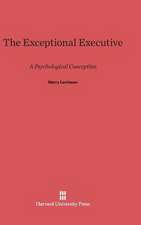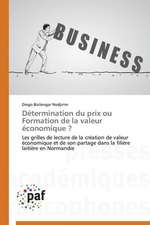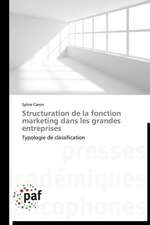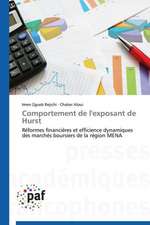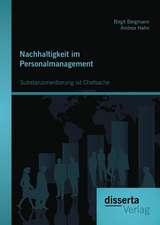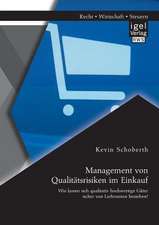Sustaining a Culture of Process Control and Continuous Improvement: The Roadmap for Efficiency and Operational Excellence
Autor Philip J. Gisien Limba Engleză Paperback – 10 mai 2018
This structured approach makes a clear connection between the need for a quality process to serve as the foundation for incremental efficiency improvements. This book moves beyond talking about the value contribution of tools and techniques for process control and continuous improvement by focusing on the daily work routines necessary to maintain and sustain these activities as part of a lean process and management mindset.
Part 1 discusses process quality improvement with an understanding of variation and its impact on process performance. It continues by stressing the importance of standardizing a process to achieve process stability. Once process stability is reflected in a consistent and predictable output, attention is turned to ensuring the process is capable of consistently meeting customer requirements. This series of activities sets the foundation for process control and the sustainable pursuit of efficiency improvements.
Part 2 focuses on efficiency improvement by eliminating waste while improving process flow using proven tools and methods. Although there is a clear relationship between waste elimination and process flow, these activities are discussed separately to allow those more interested in waste elimination to work independently from those looking to optimize value stream flow.
Part 3 explores the principles, practices, systems, and behaviors required to maintain process control while creating a mindset of continuous incremental improvement. It considers the role organizational structure, discipline, and accountability play as essential components for long term operational success.
This book will:
- Provide readers with a clear roadmap for establishing, achieving, and maintaining process control as the foundation upon which to pursue efficiency improvements.
- Establish direction and methods for continuous and sustainable process improvement
- Define the practices, systems, and behaviors required to realize desired results and develop a culture of process control and continuous improvement along the road to operational excellence.
| Toate formatele și edițiile | Preț | Express |
|---|---|---|
| Paperback (1) | 408.43 lei 6-8 săpt. | |
| Taylor & Francis – 10 mai 2018 | 408.43 lei 6-8 săpt. | |
| Hardback (1) | 764.20 lei 6-8 săpt. | |
| Taylor & Francis – 10 mai 2018 | 764.20 lei 6-8 săpt. |
Preț: 408.43 lei
Nou
Puncte Express: 613
Preț estimativ în valută:
78.16€ • 81.30$ • 64.53£
78.16€ • 81.30$ • 64.53£
Carte tipărită la comandă
Livrare economică 15-29 aprilie
Preluare comenzi: 021 569.72.76
Specificații
ISBN-13: 9781138297333
ISBN-10: 113829733X
Pagini: 428
Ilustrații: 120 Line drawings, black and white; 5 Halftones, black and white; 125 Illustrations, black and white
Dimensiuni: 178 x 254 x 22 mm
Greutate: 0.74 kg
Ediția:1
Editura: Taylor & Francis
Colecția Productivity Press
Locul publicării:Oxford, United Kingdom
ISBN-10: 113829733X
Pagini: 428
Ilustrații: 120 Line drawings, black and white; 5 Halftones, black and white; 125 Illustrations, black and white
Dimensiuni: 178 x 254 x 22 mm
Greutate: 0.74 kg
Ediția:1
Editura: Taylor & Francis
Colecția Productivity Press
Locul publicării:Oxford, United Kingdom
Public țintă
Professional and Professional Practice & DevelopmentCuprins
Foreword.
Acknowledgment.
Introduction.
PART I QUALITY IMPROVEMENT: BUILDING A FOUNDATION FOR LEAN EFFICIENCY IMPROVEMENTS.
1 Process Variation.
2 Process Standardization.
3 Process Stability.
4 Process Capability.
5 Process Control
PART II EFFICIENCY IMPROVEMENT
6 A Lean Mindset.
7 Lean Preparation.
8 Waste Elimination.
9 Process Flow Improvement
PART III SUSTAINABLE IMPROVEMENTS.
10 Creating a Culture of Operational Excellence (Culture, Principles, Systems, Behaviors and Results).
11 Daily Shop Floor Management: Through Structure, Discipline and Accountability.
12 Building a Sustainable Lean Enterprise
Appendix I: Lean Process Improvement – Overview
Appendix II: Process Quality and Efficiency Improvement through Macro and Micro Variation Reduction
Appendix III: Problem‑Solving Flow
Appendix IV: Process Quality Improvement Flow
Appendix V: Layered Process Audit (LPA) Checklist
Appendix VI: Standardized Work Recording Chart
Appendix VII: Source of Variation (SOV) and Variation Reduction
Appendix VIII: Efficiency Improvement
Appendix IX: Operations versus Lean Management
Appendix X: Abnormality Tracker
Appendix XI: Daily Shop Floor Management Flow
Appendix XII: Daily Shop Floor Management Tools and Techniques
Appendix XIII: Work Routine Management
Appendix XIV: Process Maturity and Operational Excellence Assessment
Appendix XV: A3 Reporting Template and Description
Index
Acknowledgment.
Introduction.
PART I QUALITY IMPROVEMENT: BUILDING A FOUNDATION FOR LEAN EFFICIENCY IMPROVEMENTS.
1 Process Variation.
2 Process Standardization.
3 Process Stability.
4 Process Capability.
5 Process Control
PART II EFFICIENCY IMPROVEMENT
6 A Lean Mindset.
7 Lean Preparation.
8 Waste Elimination.
9 Process Flow Improvement
PART III SUSTAINABLE IMPROVEMENTS.
10 Creating a Culture of Operational Excellence (Culture, Principles, Systems, Behaviors and Results).
11 Daily Shop Floor Management: Through Structure, Discipline and Accountability.
12 Building a Sustainable Lean Enterprise
Appendix I: Lean Process Improvement – Overview
Appendix II: Process Quality and Efficiency Improvement through Macro and Micro Variation Reduction
Appendix III: Problem‑Solving Flow
Appendix IV: Process Quality Improvement Flow
Appendix V: Layered Process Audit (LPA) Checklist
Appendix VI: Standardized Work Recording Chart
Appendix VII: Source of Variation (SOV) and Variation Reduction
Appendix VIII: Efficiency Improvement
Appendix IX: Operations versus Lean Management
Appendix X: Abnormality Tracker
Appendix XI: Daily Shop Floor Management Flow
Appendix XII: Daily Shop Floor Management Tools and Techniques
Appendix XIII: Work Routine Management
Appendix XIV: Process Maturity and Operational Excellence Assessment
Appendix XV: A3 Reporting Template and Description
Index
Descriere
This book presents a methodology for continuous process improvement in a structured, logical, and easily understandable framework based on industry accepted tools, techniques and practices. It starts by highlighting and explaining the conditions necessary for establishing a stable and capable process and the actions required to maintain process control, while setting the stage for sustainable efficiency improvements driven by waste elimination and process flow enhancement.
This structured approach makes a clear connection between the need for a quality process to serve as the foundation for incremental efficiency improvements. The expectation of this work is to move beyond talking about the value contribution of tools and techniques for process control and continuous improvement by focus on the daily work routines necessary to maintain and sustain these activities as part of a process or 'shop floor' management mindset.
Part 1 starts the discussion of continuous process improvement with an understanding of variation and its impact on process. It continues by stressing the importance of standardizing a process on the road to process stability. Once process stability is reflected in a consistent and predictable process output, attention is turned to ensuring output capability consistently meets customer requirements. This series of activities sets the foundation for the sustainable pursuit of efficiency improvements.
Part 2 focuses on efficiency improvement by eliminating waste while improving process flow using proven tools, techniques and methods. Although there is a clear relationship between waste elimination and process flow, these activities are discussed separately to allow those more interested in waste elimination to work independently from those looking to optimize value stream flow.
Part 3, the final section, explores the principles, practices, systems and behaviors required to maintain process control while creating a mindset of continuous incremental improvement. This section also considers the role organizational structure, discipline and accountability play as essential components for long term operational success.
The key benefits of this work is to provide readers with a clear roadmap to establishing, achieving and maintaining process control as the foundation upon which to pursue efficiency improvements. It will raise awareness of the practices, systems and behaviors required to realize desired results and sustain a culture of process control and continuous improvement along the road to operational excellence.
This structured approach makes a clear connection between the need for a quality process to serve as the foundation for incremental efficiency improvements. The expectation of this work is to move beyond talking about the value contribution of tools and techniques for process control and continuous improvement by focus on the daily work routines necessary to maintain and sustain these activities as part of a process or 'shop floor' management mindset.
Part 1 starts the discussion of continuous process improvement with an understanding of variation and its impact on process. It continues by stressing the importance of standardizing a process on the road to process stability. Once process stability is reflected in a consistent and predictable process output, attention is turned to ensuring output capability consistently meets customer requirements. This series of activities sets the foundation for the sustainable pursuit of efficiency improvements.
Part 2 focuses on efficiency improvement by eliminating waste while improving process flow using proven tools, techniques and methods. Although there is a clear relationship between waste elimination and process flow, these activities are discussed separately to allow those more interested in waste elimination to work independently from those looking to optimize value stream flow.
Part 3, the final section, explores the principles, practices, systems and behaviors required to maintain process control while creating a mindset of continuous incremental improvement. This section also considers the role organizational structure, discipline and accountability play as essential components for long term operational success.
The key benefits of this work is to provide readers with a clear roadmap to establishing, achieving and maintaining process control as the foundation upon which to pursue efficiency improvements. It will raise awareness of the practices, systems and behaviors required to realize desired results and sustain a culture of process control and continuous improvement along the road to operational excellence.


